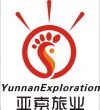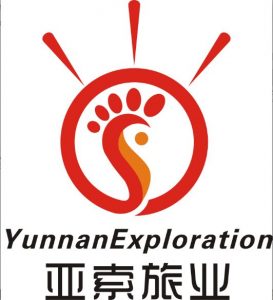
Munaozongge Festival of Jingpo Ethnic Minority
Munaozongge(目瑙纵歌) means singing and dancing together in the Jingpo Ethnic language, which is attended by thousands of revelers each year. It originated from religious activities.The main content of Munaozongge is dancing. In the center of the dance hall, there are four wooden pillars, called Munaozongge, which are used to worship the sun god and instruct the dance line. Munaozongge, which integrates folk customs and activities such as music and dance, painting and sculpture, costume, architectural crafts, religious rituals and customs, is a concentrated display of Jingpo ethnic culture and art, customs and etiquette, and spiritual features. It is of great significance to the study of Jingpo ethnic history and culture.
Longchuan County(陇川县) is the most complete and representative area with the largest population of Jingpo nationality and the most complete and standardized inheritance of Munaozongge.

Symbolism and Setting of Munaozongge
Date: From the fifteenth day of first lunar month to the nineteenth day of the same month
Place: Dehong Prefecture(德宏州)
Munaozongge is staged on a square where Jingpos have to arrange Munao Poles. The Poles are designed or flanked with different symbolic patterns.
- Ferns: fern sprouts look like fists, and leaves resemble lining arrows; so ferns are symbol of union and progressing.
- Swords: symbol of bravery and fortitude.
- Himalaya: said to be where Jingpos originate.
- Crops and live stocks: symbol of pursuit for bight future and well-off life.
- Gongs and other musical instruments: symbol of auspiciousness.
- Fences: symbol of triumph, etc
Kinds of Munaozongge
There are 12 kinds of Munaozongge. The traditional song of Munaozongge includes Su Munao/苏目瑙( for harvest celebration), Ba Dang Munao/巴当木脑(for victory celebration), Dingshuan Munao/定栓目瑙(for new residence completion celebration), Deru Munao/德如目瑙(for vows of war), Tingre Munao/亭热目瑙(for celebrating the site selection and foundation laying ), Naosai Munao/瑙赛目瑙(recreational activities), Kenran Munao肯然目瑙(for celebrating marriage) ,Tingran Munao亭然目瑙(for making friends) , Kelong Munao/克龙目瑙 (welcome guests), Gongran Munao宫然目瑙 (divorce respectively) and Zhu Munao /朱目瑙(funeral and sacrificial dance).
Munao Zongge Festival of the Jingpo ethnic group, prevalent in the Jingpo-populated areas of Yunnan Province, is a traditional ethnic festival and a national intangible cultural heritage. Munao Zongge, also known as “Zongge,” means “a song and dance gathering.” The festival is the most grandiose traditional event for the Jingpo people, featuring thousands of participants dancing in unison to a single drumbeat, creating a magnificent and awe-inspiring spectacle. It is known as the “Dance of Heaven” and the “Dance of Thousands” in China’s western region. “Munao” is a Jingpo word, while “Zongge” is a literal translation from the Zaiwa language, meaning everyone comes together to dance. In the Jingpo-populated areas of Dehong Prefecture, the Munao Zongge Festival takes place around the fifteenth day of the first lunar month, with celebrations held in every village.
On May 20, 2006, the “Jingpo Munao Zongge” declared by Longchuan County, Yunnan Province, was approved by the State Council to be included in the first batch of national intangible cultural heritage list, numbered IX-11.
Historical Origins
According to Jingpo folklore, the origins of Munao Zongge are as ancient as humanity itself. It is said that in ancient times, Munao Zongge was a dance in the palace of the Sun King, unknown to humans and only performed by the children of the Sun King. The Sun King, Zanwa Nengsang, sent an emissary, Bizoruitang Ji Modai, to invite earthly creatures to participate in the Munao Zongge—Zan Munao held at the Sun King’s palace. Birds from Earth attended the gathering and danced with the gods of the Sun Palace, eventually teaching this dance to humans.
Throughout the historical development of the Jingpo people, primitive religious rituals, including the original form of Munao Zongge, were prevalent. These rituals were initially exclusive to the nobility and involved complex and lengthy ceremonies. Since the founding of New China, Munao Zongge has evolved into a cultural and recreational event, with simplified rituals, reduced animal sacrifices, and streamlined procedures, saving significant human, material, and financial resources.
Before 1950, Munao Zongge was a significant sacrificial activity in Jingpo areas, held to honor the greatest deity, “Modai.” After 1950, the Munao Zongge Festival became a grand event for making friends, enhancing friendships, facilitating economic and cultural exchanges, and strengthening ethnic unity.
Main Activities
The festival lasts for four days. The first day is “Qi Bai,” during which officials perform final checks and verifications for the smooth conduct of the “Zheng Bai” days, including setting the festive atmosphere, preparing guest gifts, and checking musical instruments. Small vendors make final adjustments to their stalls and prepare for the busy days ahead.
The second and third days are “Zheng Bai,” the most vibrant days of the festival. The second day starts with an opening ceremony, including a bull-slaying ritual performed by priests. Fireworks and firecrackers signal the official start of the festival. The highlight is the Munao Zongge dance, with thousands dancing to drums, gongs, and Jingpo songs. Participants, dressed in traditional attire, follow four elders wearing dragon robes and peacock feathers into the dance arena. The elders perform solo dances, followed by large groups led by eight men and eight women, forming a massive circle. The dance follows the ancestral migration routes depicted in the Munao Shidong diagram, with intricate formations changing with the drumbeats, creating a grand and powerful spectacle. Dancers, immersed in the festivities, wave silver swords and fans, adding to the festive atmosphere. The night features performances by Jingpo delegations, including singing, dancing, and skits.
The fourth day is “Luo Bai,” featuring various traditional Jingpo competitions such as climbing slippery poles, tugging bamboo sticks, and weaving contests.
Cultural Characteristics
Jingpo Munao Zongge is a comprehensive art form combining music, dance, religion, ritual, and visual performance. It encompasses various cultural elements, including mythology, primitive religion, military and agricultural rites, and daily blessings. Modern Munao Zongge festivals often integrate multiple cultural meanings.
The dance aims to pray for smooth sailing, peace, prosperity, and unity.
Heritage Protection
Heritage Value
During Munao Zongge, Jingpo people trace their cultural history through the “Munao Shidong.” The festival incorporates traditional cultural elements, making it an essential means of cultural education.
- Inheriting and Developing Traditional Culture: Historically, the Jingpo people had no written language until the late 19th century when Western missionaries created a Jingpo script using Latin letters. Thus, the grand gatherings like Munao Zongge serve as crucial platforms for cultural transmission, with elders reciting the creation epic “Lebao Zaiwa” and demonstrating agricultural dances, imparting knowledge to the broader community.
- Strengthening Ancestor Worship: The intricate patterns on the “Munao Shidong” symbolize the Jingpo ancestors’ migration journey, reinforcing the community’s ancestral roots and identity.
- Enhancing Ethnic Unity: The festival fosters communication and interaction among Jingpo subgroups and even international relations, as seen in the 2010 International Munao Zongge Festival in Dehong, which invited Jingpo representatives from China and abroad, including Myanmar, India, and Thailand.

Heritage Bearers
Yue Matong, a Jingpo man from Yunnan Province, was selected in June 2009 as a representative inheritor of the national intangible cultural heritage project “Jingpo Munao Zongge,” declared by Longchuan County, Yunnan Province.
Protection Measures
In November 2019, the Longchuan County Cultural Center was designated as the protection unit for the “Jingpo Munao Zongge” project on the list of National Intangible Cultural Heritage Representative Projects. The center was re-evaluated and deemed qualified on October 31, 2023.
Social Impact
On February 6, 2012, the “2012 China Dehong Jingpo International Munao Zongge Festival” set two world records: the “largest Jingpo thousand-knife dance” and the “largest Munao Zongge festival with ten thousand participants.” On February 22, 2016, the opening ceremony of the 2016 China Dehong Jingpo International Munao Zongge Festival was held in Mangshi, Dehong Dai and Jingpo Autonomous Prefecture, Yunnan Province. The Jingpo people welcomed guests with a “Green Leaf Banquet,” which served over 3,391 people, setting the world record for the “largest Jingpo Green Leaf Banquet.”
Chinese Version:http://www.ynich.cn/view-ml-11110-1406.html
http://www.ynich.cn/view-ml-11111-1207.html Translated by Olive Zhang/张银芳

 7 Days GolfingTour
7 Days GolfingTour
 8 Days Group Tour
8 Days Group Tour
 8 Days Yunnan Tour
8 Days Yunnan Tour
 7 Days Shangri La Hiking
7 Days Shangri La Hiking
 11 Days Yunnan Tour
11 Days Yunnan Tour
 6 Days Yuanyang Terraces
6 Days Yuanyang Terraces
 11 Days Yunnan Tour
11 Days Yunnan Tour
 8 Days South Yunnan
8 Days South Yunnan
 7 Days Tea Tour
7 Days Tea Tour
 8 Days Muslim Tour
8 Days Muslim Tour
 12 Days Self-Driving
12 Days Self-Driving
 4 Days Haba Climbing
4 Days Haba Climbing
 Tiger Leaping Gorge
Tiger Leaping Gorge
 Stone Forest
Stone Forest
 Yunnan-Tibet
Yunnan-Tibet
 Hani Rice Terraces
Hani Rice Terraces
 Kunming
Kunming
 Lijiang
Lijiang
 Shangri-la
Shangri-la
 Dali
Dali
 XishuangBanna
XishuangBanna
 Honghe
Honghe
 Kunming
Kunming
 Lijiang
Lijiang
 Shangri-la
Shangri-la
 Yuanyang Rice Terraces
Yuanyang Rice Terraces
 Nujiang
Nujiang
 XishuangBanna
XishuangBanna
 Spring City Golf
Spring City Golf
 Snow Mountain Golf
Snow Mountain Golf
 Stone Mountain Golf
Stone Mountain Golf



